


C57BL/6-Pdcd1tm1(PDCD1)BcgenCd274tm1(CD274)BcgenTnfrsf1btm1(TNFRSF1B)Bcgen/Bcgen • 130849
| Product name | B-hPD-1/hPD-L1/hTNFR2 mice |
|---|---|
| Catalog number | 130849 |
| Strain name | C57BL/6-Pdcd1tm1(PDCD1)BcgenCd274tm1(CD274)BcgenTnfrsf1btm1(TNFRSF1B)Bcgen/Bcgen |
| Strain background | C57BL/6 |
| NCBI gene ID | 18566,60533,21938 (Human) |
| Aliases | PD-1 (Programmed death-1)CD274 (CD274 antigen)TNFRSF1B (Tumor necrosis factor receptor superfamily, member 1b) |
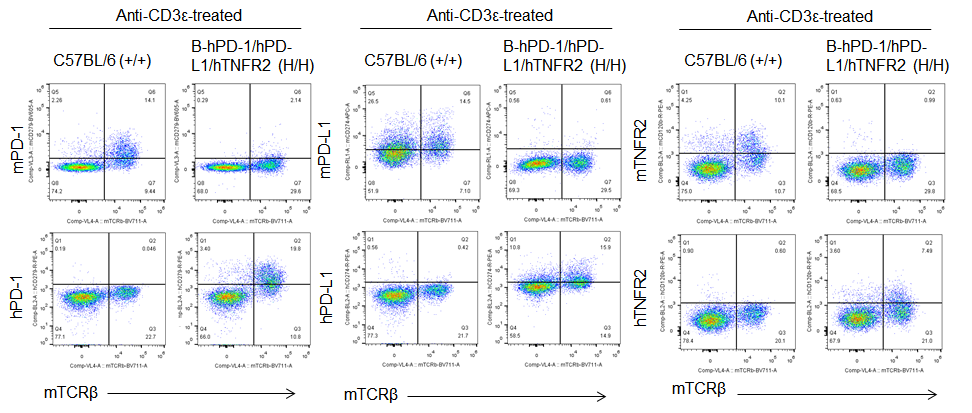
Strain specific PD-1, PD-L1 and TNFR2 expression analysis in homozygous B-hPD-1/hPD-L1/hTNFR2 (H/H) mice by flow cytometry. Splenocytes were collected from WT and homozygous B-hPD-1/hPD-L1/hTNFR2 (H/H) mice stimulated with anti-CD3ε in vivo, and analyzed by flow cytometry with species-specific anti-PD-1, anti-PD-L1 and anti-TNFR2 antibody. Mouse PD-1, PD-L1 and TNFR2 were detectable in WT mice. Human PD-1, PD-L1 and TNFR2 were exclusively detectable in homozygous B-hPD-1/hPD-L1/hTNFR2 but not WT mice.
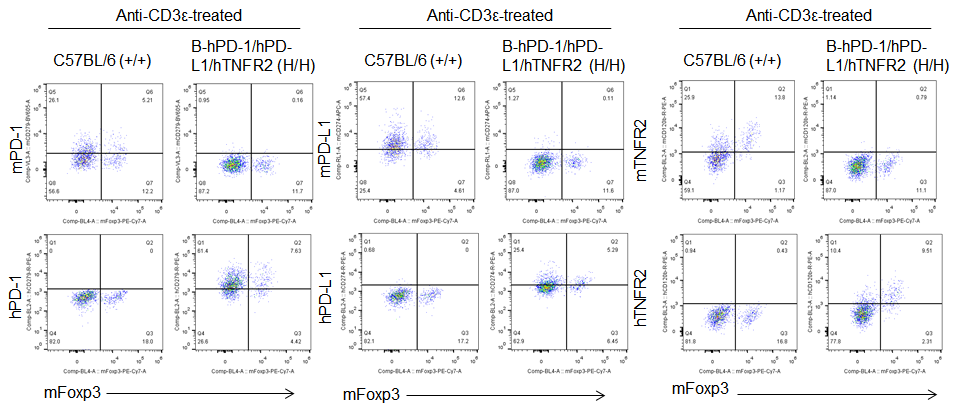
Strain specific PD-1, PD-L1 and TNFR2 expression analysis in homozygous B-hPD-1/hPD-L1/hTNFR2 (H/H) mice by flow cytometry. Splenocytes were collected from WT and homozygous B-hPD-1/hPD-L1/hTNFR2 (H/H) mice stimulated with anti-CD3ε in vivo, and analyzed by flow cytometry with species-specific anti-PD-1, anti-PD-L1 and anti-TNFR2 antibody. Mouse PD-1, PD-L1 and TNFR2 were detectable in WT mice. Human PD-1, PD-L1 and TNFR2 were exclusively detectable in homozygous B-hPD-1/hPD-L1/hTNFR2 but not WT mice.
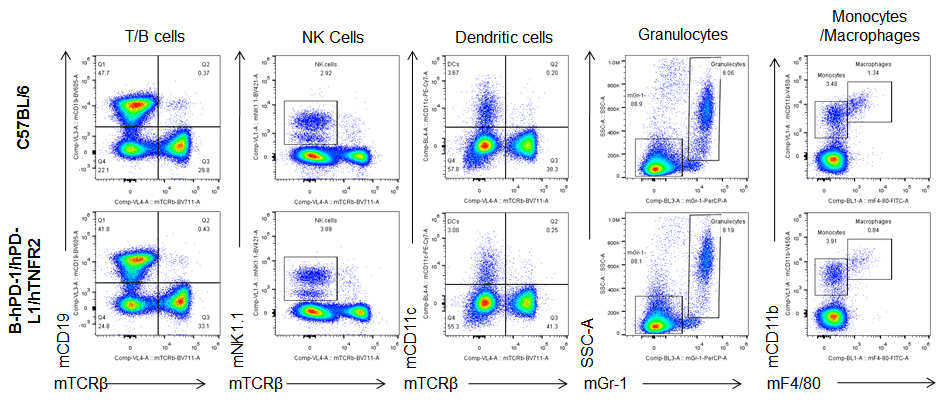
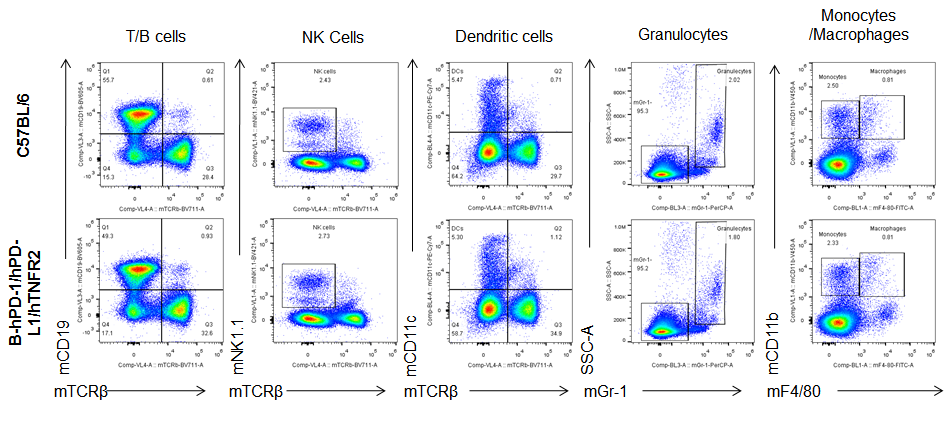
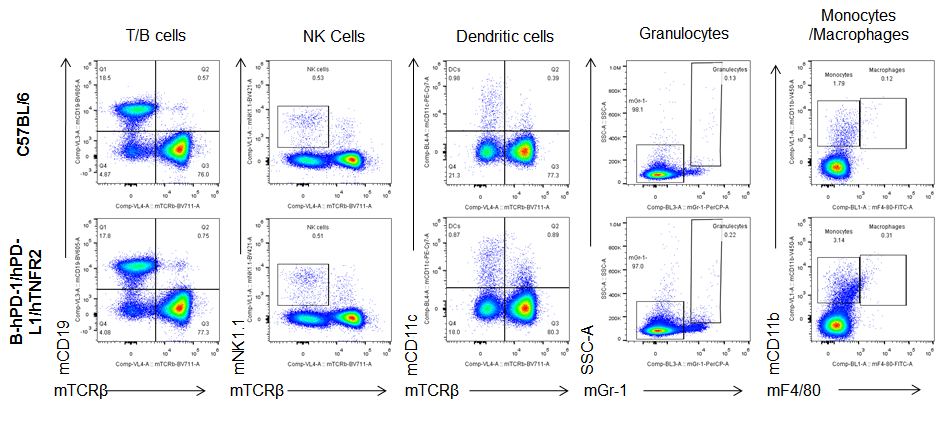
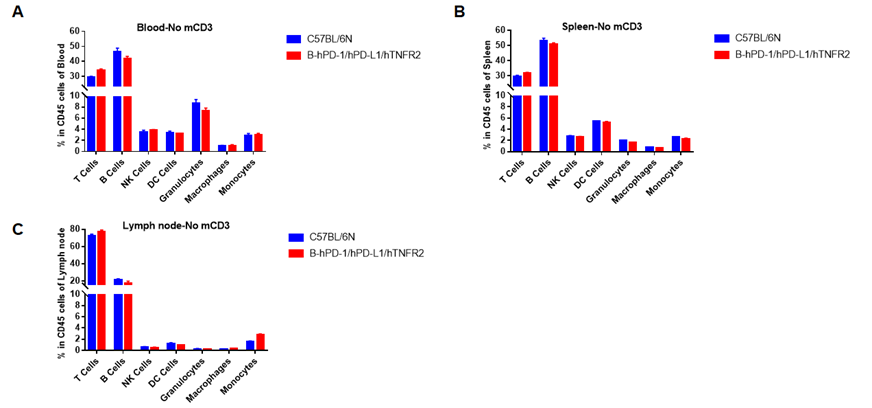
Analysis of blood, spleen and lymph node leukocytes cell subpopulations by FACS. Blood, spleen and lymph node leukocytes cell were isolated from female mice in the panel(n=3, 6 week-old). Flow cytometry analysis was performed to assess leukocyte subpopulations. Percent of T, B, NK, Granulocytes, Monocyte, DC and macrophage cells in homozygous B-hPD-1/hPD-L1/hTNFR2 mice were similar to those in the C57BL/6 mice, demonstrating that the humanized mouse does not change the overall development, differentiation or distribution of these cell types in blood, spleen and lymph node.
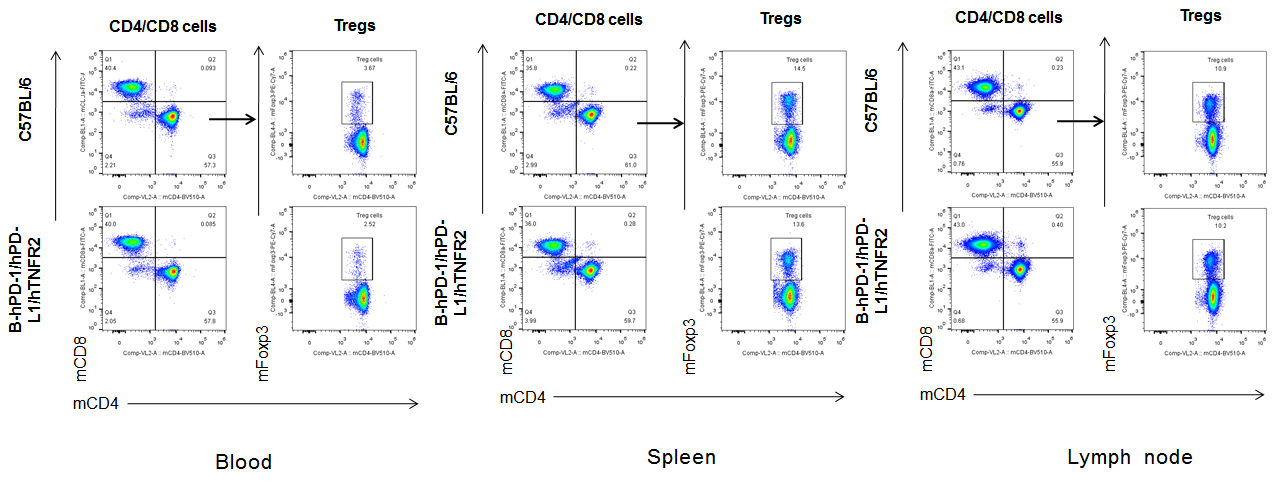
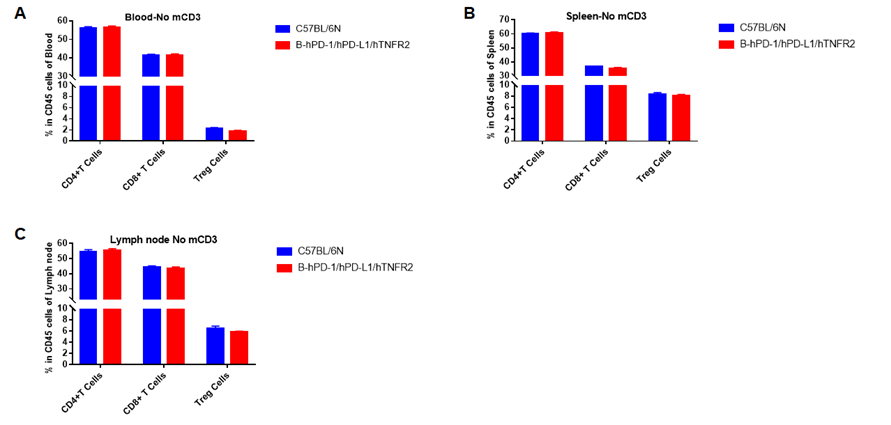
Analysis of blood, spleen and lymph node T cell subpopulations by FACS. Blood, spleen and lymph node leukocytes cell were isolated from female mice in the panel(n=3, 6 week-old). Flow cytometry analysis was performed to assess leukocyte subpopulations. Percent of CD4+T, CD8+T and Tre cells in homozygous B-hPD-1/hPD-L1/hTNFR2 mice were similar to those in the C57BL/6 mice, demonstrating that the humanized mouse does not change the overall development, differentiation or distribution of these cell types in blood, spleen and lymph node.
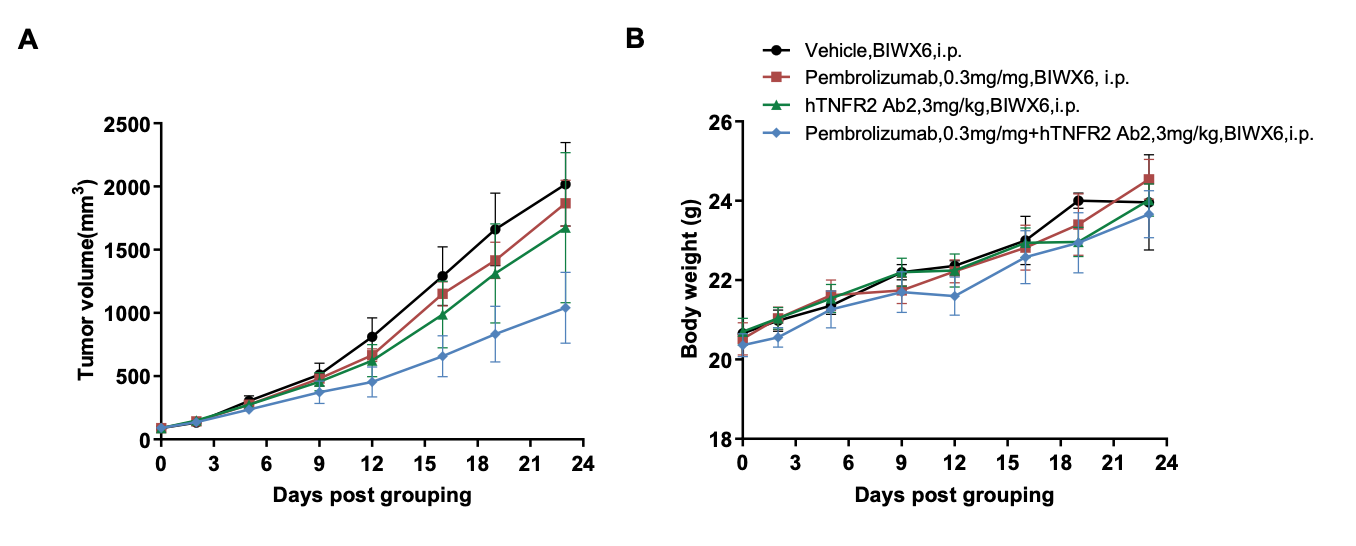
Antitumor activity of anti-human PD-1 antibody combined with anti-human TNFR2 antibody in B-hPD-1/hPD-L1/hTNFR2 mice. (A) Anti-human PD-1 antibody combined with anti-human TNFR2 antibody inhibited hPD-L1 MC38 tumor growth B-hPD-1/hPD-L1/hTNFR2 mice. All antibodies used in the experiments were prepared in-house. hPD-L1 MC38 cells were subcutaneously implanted into homozygous B-hPD-1/hPD-L1/hTNFR2 mice (female, 6-7-week-old, n=5). Mice were grouped when tumor volume reached approximately 100 mm3, at which time they were treated with human PD-1 antibody and human hTNFR2 antibodies (in house) with doses and schedules indicated in panel A. (B) Body weight changes during treatment. As shown in panel A, combination of PD-1 and hTNFR2 antibodies shows more inhibitory effects than individual groups, demonstrating that B-hPD-1/hPD-L1/hTNFR2 mice provide a powerful preclinical model for in vivo evaluating combination therapy efficacy of hTNFR2 antibodies and hPD-1 antibodies. Values are expressed as mean ± SEM.
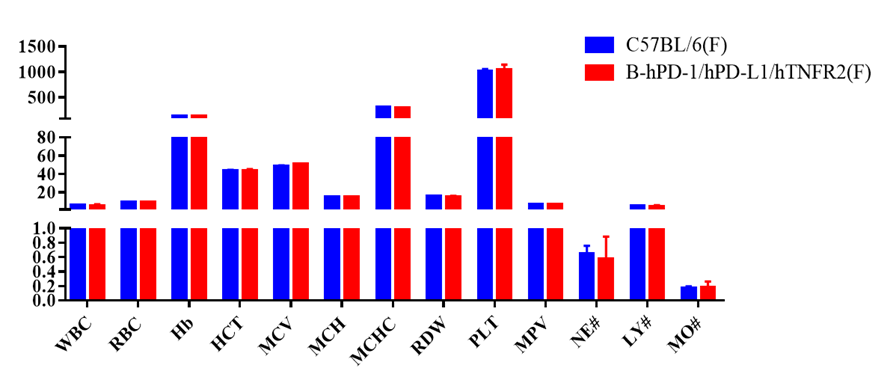
Complete blood count (CBC). Blood from C57BL/6 and B-hPD-1/hPD-L1/hTNFR2 mice (n=5, 6 week-old, female) were collected and analyzed for CBC. Any measurement of B-hPD-1/hPD-L1/hTNFR2 mice in the panel were similar to C57BL/6, indicating that humanized mouse does not change blood cell composition and morphology. Values are expressed as mean ± SEM.

Blood chemistry tests of B-hPD-1/hPD-L1/hTNFR2 mice. Serum from C57BL/6 and B-hPD-1/hPD-L1/hTNFR2 mice (n=5, 6 week-old, female) were collected and analyzed for levels of ALT, AST and other indicators in the panel. There was no differences on either measurement between C57BL/6 and humanized mouse, indicating that humanized mouse does not change ALT and AST levels or health of liver. Values are expressed as mean ± SEM.